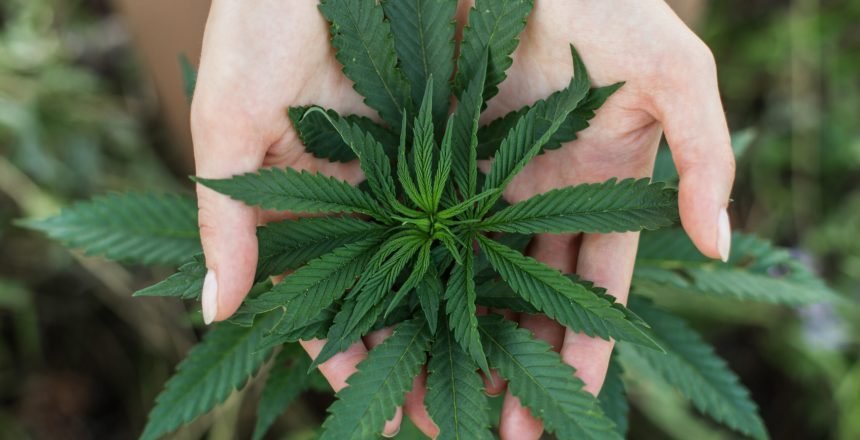Cosmetics have come a long way since the ancient Egyptians first dabbed kohl on their lids, thanks to the development of new ingredients and cutting-edge manufacturing processes. Some two thousand years later, cannabis acne treatment is a new contender.
Thirty-six states, the District of Columbia, and four U.S. territories have passed laws legalizing marijuana since April 20, 2021. There is a broad spectrum of approaches, from full legalization for recreational use to legalization for medical or decriminalization. Cannabis and eczema may sound an interesting combination. However, more and more people have been using it to treat their conditions.
Dermatologists are now getting questions like, “What is the research on cannabis and eczema? Can it treat my skin conditions?” from patients all over the country. This is happening especially in states where cannabis has been legalized, as more patients want to try cannabis acne treatment.
However, it is difficult for doctors, patients, and even regulators to comprehend the ramifications of cannabis topicals due to the fragmented regulatory market. In this piece, we’ll examine the research behind the molecules in cannabis and their possible utility in treating skin disorders.
The Science Behind Cannabis Acne Treatment
Cannabis sativa, from which marijuana is derived, is one of the earliest and most popular psychoactive plants in human history. Of the more than 60 compounds found in marijuana, only tetrahydrocannabinol (THC) has psychoactive properties. This has contributed to its illegal status in the medical community, but it has also hampered efforts to investigate the drug’s benefits to human health.
It’s common to refer to cannabis, marijuana, and hemp as the same plant. Cannabis, marijuana, weed, pot, and ganja are all slang terms for cannabis strains high in the psychoactive cannabinoid THC. Hemp is commonly referred to as a “low THC variety” because the law defines it as a cannabis plant containing less than 0.3% THC. Marijuana is defined by law as cannabis with a THC content of 0.3% or higher. On top of all that, marijuana and hemp are subject to different sets of rules, with hemp receiving less scrutiny.
Hemp and marijuana both produce a wide range of secondary cannabinoids, such as terpenes, which give each strain of the plant its distinctive aroma and flavonoids. It’s also what gives the plant its characteristic color. The endocannabinoid system mediates the interactions between the human body’s various physiological systems and the cannabinoids, terpenes, and other molecules that give marijuana its characteristic aroma and pigmentation.
It wasn’t until recently that experts confirmed the widespread presence of cannabinoid receptors in the human body, opening the door to serious discussion of their potential as a therapeutic tool.
Meet The Compounds In Cannabis That Don’t Get You High
THC is the active chemical in marijuana and is mainly responsible for the psychoactive effects that have given the plant a bad reputation. Cannabinoids, on the other hand, are a chemically heterogeneous class of substances with exciting therapeutic potential for a wide range of conditions and no psychoactive effects whatsoever.
Cannabinoids are the active ingredients in marijuana, and there are five main ones:
- cannabidiol (CBD) (CBD)
- cannabichromene (CBC) (CBC)
- cannabigerol (CBG) (CBG)
- Cannabidiol, or delta(9)-tetrahydrocannabinol (THC)
- cannabinol (CBN) (CBN)
Many uses for cannabis extracts have been discovered since the first human cannabinoid receptors were found in the late 20th century.
The anti-inflammatory and anti-itch effects of these cannabinoids are of particular interest in AD. Also, the low systemic absorption into the bloodstream results from the high safety profile and relatively low levels of cannabinoids required to affect the skin; this means that there is no risk of possible intoxication from THC.
The Science Behind Cannabis and Eczema
Anti-inflammatory, antimicrobial, and anti-itch properties in cannabinoids have been noted for a long time. Still, it wasn’t until recently that high-quality research was published to understand the physiological effects at play.
One of the pioneers of American dermatology was Dr. Henry Granger Piffard, MD (1842-1910). He was the first editor of JAMA Dermatology, formerly known as the Journal of Cutaneous and Venereal Diseases. Piffard also authored the first textbook on dermatologic therapeutics. He writes, “a pill of cannabis Indica at bedtime has at my hands sometimes afforded relief to the intolerable itching of eczema.” Numerous studies on the possible benefits of cannabinoids in skin conditions have been published since then.
Itching in eczema is caused by a combination of factors, including the condition’s dry skin, histamine release, and sensory nerve fibers. But cannabinoids are highly effective at relieving itching. Cannabinoids, through their interactions with skin receptors, may ameliorate the condition of those with eczema. Phytocannabinoids interact with our internal cannabinoid system in a complex manner, causing the effects mentioned above.
A Combination Backed By Science
Cannabis and eczema are now considered the best combination to show promise as a treatment for eczema partly because of how well they handle Staphylococcus aureus colonization, a complicating and contributing factor in the disease.
Although references to cannabinoids’ antimicrobial properties date back to at least the 1980s, a more recent investigation of the five main cannabinoids revealed that they all exhibited potent activity against a range of S. aureus strains.
It has been found that cannabinoids have anti-inflammatory effects. Activation of cannabinoid receptor 1 (CB1) is responsible for topical THC’s anti-allergic effects on contact dermatitis in mice. In rat models, other molecules with similar structures to cannabis have also shown significant anti-pain results.
An increase in the effectiveness of topical cannabinoids for treating eczema has been reported. Recent research has shown that an endocannabinoid-interacting molecule can suppress mast cell activation. Immune cells, known as mast cells, release histamine in response to stimulation, triggering severe itching and inflammation.
Study results showed that endocannabinoid cream reduced itchiness and insomnia in patients with eczema by an average of 60%. By the end of the study, 20% of participants no longer needed to use topical immunomodulators. Another 38% were no longer required to take oral antihistamines, and 33.6% no longer needed to use topical steroids.
Benefits of a Cannabis Acne Treatment
- CBD can potentially lessen the inflammation, pain, and redness of inflammatory acne and thus make it easier to treat
- Excess sebum can be reduced due to CBD’s ability to regulate hormones involved in oil production
- You can reduce inflammation caused by acne by using a cannabis acne treatment, and overall breakouts can be mitigated by the plant’s ability to control oil production
- CBD’s anti-inflammatory properties can help reduce rosacea outbreaks
- CBD’s ability to neutralize free radical damage suggests it may help prevent the aging skin condition known as photoaging
- The active component in cannabis acne treatment, CBD, is useful for treating eczema and other chronic skin conditions like psoriasis and dermatitis by reducing inflammation and irritation
- Adaptogens, like CBD, may help mitigate the side effects of stress on the body by modulating the production and release of hormones and other compounds (i.e., kinase, nitric oxide, and cortisol)
- Due to its emollient properties, CBD can be used to treat dryness and a lack of suppleness
The Future of Cannabis Creams for Eczema
When selecting a product, it is important to pay close attention to the ingredients list to ensure no irritants are present. Formulations that may have been developed for muscle and joint pain are not the best bet when choosing a topical, which should be selected based on the profile of ingredients known to reduce pain, inflammation, and irritation for the skin. Furthermore, there may be residual solvents from the production process.
Now that medical marijuana is legal in at least 36 states, each has its own rules for how it can be used and regulated. You can purchase hemp-based products (low THC varieties) online with almost no oversight for potency, consistency, or contaminants like pesticides and metals.
Since its inception, incorrect dosing and labeling have plagued the industry. Recent research by Penn State University found that as much as 70% of CBD products sold online have misleading labels.
The best course of action may be to pay close attention to ingredient lists and insist that products be tested by an independent lab rather than by the manufacturer until clinical data are developed for individual products. Testing is typically regulated in states where cannabis is sold through dispensaries, providing more security for buyers than online sales.
Cannabinoids represent an exciting prospect for the future of Eczema therapy. With measurable anti-itch, anti-pain, antimicrobial and anti-inflammatory properties, the effect of cannabinoids in patients with Eczema has already begun to be demonstrated.
More Information On The Effects of Cannabis Acne Treatment
If you want to get more info on cannabis and how it can help alleviate skin pain or want to fill your prescriptions and get a cannabis card with benefits. You’re in the right place. Green Hope Wellness Clinic is a place where you can easily find free information, advice, insights, and resources about cannabis. Secure your cannabis card with benefits right now.


